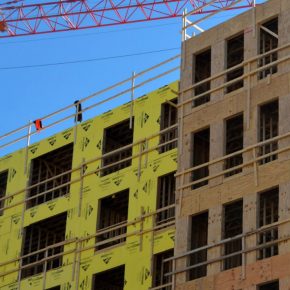Tydzień w gospodarce
Category: Raporty

(Paul Brennan, CC0)
According to data collected by Eurostat, in 2018 real estate transaction prices in the countries of the European Union increased by 4.4 per cent. A year before the rate of growth (expressed in constant prices of 2015) was slightly lower and amounted to 4.3 per cent. Last year, the strongest growth in real estate prices was recorded in Portugal (an increase by as much as 10.3 per cent compared to 2017) and Ireland (by 10.2 per cent), i.e. the countries where these prices had fallen the most during the financial crisis a decade ago. However, the rate of growth in real estate prices was only slightly lower (amounting to nearly 10 per cent) in countries that had not previously suffered from a deep economic crisis, including Hungary, the Czech Republic and the Netherlands.

Poland is also among the countries in which the rate of increase in real estate transaction prices in 2018 was higher than the average in the European Union. Furthermore, the rate of growth in housing prices in Poland significantly accelerated compared to the previous year (6.6 per cent in 2018 compared to 3.8 per cent in 2017). The acceleration was stronger in the secondary market (where the growth rate increased from 4.5 to 7.5 per cent) than in the primary market (from 3.2 to 5.5 per cent).
The growth in property prices is important not only from the point of view of an individual (a seller and a buyer), but is also crucial for a broader assessment of the condition of the individual economies. Imbalances in this area became one of the causes of the last global economic crisis. Therefore, in order to prevent such events in the future, studies concerning changes in the real estate prices were included among the criteria used to evaluate the build-up of macroeconomic imbalances, adopted several years ago by the European Commission. The Commission concluded that growth in real estate prices should not be higher than 6 per cent annually. In 2018, the rate of growth of housing prices in Poland exceeded this threshold, which should certainly be seen as a warning signal.
When it comes to real estate turnover, in addition to the short-term annual price changes, longer-term price trends are also considered important. This is not only due to real estate’s importance in the monitoring of economic imbalances, but also its role as a vehicle for the accumulation of savings. These long-term trends indicate a clear increase in housing prices in almost all the countries of the European Union. In the past year, real estate in the EU was 15.3 per cent more expensive on average compared to 2010, which was adopted by Eurostat as a benchmark year. During this time the strongest price growth occurred in the real estate market in Estonia (by 83.2 per cent), Latvia (61.3 per cent), Austria (55.8 per cent) and Sweden (55.1 per cent). However, record-high price growth occurred in Iceland, which is a non-EU member state (an increase of 97.0 per cent).
The rate of growth of real estate prices in Poland during this time was much lower and only amounted to 6.7 per cent. The price growth was stronger in the primary market (an increase of 8.7 per cent) than in the secondary market (an increase of 7.0 per cent). Last year saw a pretty strong acceleration in the rate of growth of real estate prices in Poland, but we should keep in mind that these prices had previously suffered significant drops in the years 2012-2013. Those who are closely following the changes in real estate in other countries, e.g. in order to assess the potential profitability of their investments, have certainly noticed that in several EU countries these prices were still lower in 2018 than back in 2010.
One such example is Cyprus, where housing prices were 7.6 per cent lower last year than in 2010 (in constant prices of 2015). In Spain, which has already largely dealt with the consequences of the financial crisis, real estate prices in the past year were still 11.9 per cent lower than in 2010, and 14.2 per cent lower than before the 2008 crisis. In Italy, which is currently struggling with an economic crisis, prices in real estate transactions in the past year were as much as 16.4 per cent lower than in 2010.


